What tool is needed to repair a washing machine
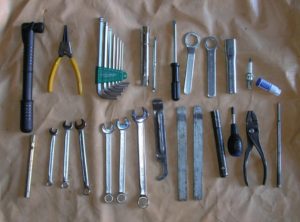 An experienced master who has been repairing washing machines for a long time has a certain set of tools. Basically, there are standard devices in the arsenal of professionals, however, besides them, there will certainly be a couple of home-made, exclusive “devices” that greatly facilitate the work with washing machines. We’ll figure out what kind of tool for repairing washing machines a “beginner” should get in order to disassemble the unit without problems, fix the malfunction, and assemble the equipment back.
An experienced master who has been repairing washing machines for a long time has a certain set of tools. Basically, there are standard devices in the arsenal of professionals, however, besides them, there will certainly be a couple of home-made, exclusive “devices” that greatly facilitate the work with washing machines. We’ll figure out what kind of tool for repairing washing machines a “beginner” should get in order to disassemble the unit without problems, fix the malfunction, and assemble the equipment back.
Required set
To begin with, let's talk about a set of tools for a home master who is not going to earn serious repairs, but only wants to fix the breakdowns of an installed home washing machine. In this case, you will need this kit:
- a pair of screwdrivers (Phillips and flat);
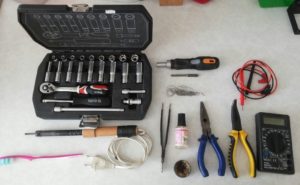
- pliers;
- set of wrenches;
- pliers;
- forceps;
- pliers for clamps;
- small hammer;
- metal service hook.
You should not specifically purchase expensive ready-made kits that are more suitable for car repair than a washing machine. Assemble your own from individual elements, it’s more efficient and cheaper.
Possessing this set of tools, it is really possible to disassemble the washing machine yourself and get to the failed part. However, if it is necessary to replace, for example, bearings, the list will be expanded with specific devices: a drill, a hacksaw for metal (in the case of a non-separable CMA tank) and a punch.
Tips for beginners
If, having assessed the breakdown that occurred with the automatic machine and your own forces, you decided not to hand over the equipment to the workshop, but to make repairs yourself, study the basic recommendations for beginners. Practical tips will help you not to waste your free time and avoid offensive mistakes.
- Take your time, think over all the upcoming actions. Having seen a certain error code on the display, do not immediately proceed to disassemble the unit. Evaluate the appearance of the washer, check its main functions: the way the machine collects and drains water, squeezes the laundry. Scroll the drum by hand, listen to the noise made by the technique.
- Disconnect equipment before operation. Safety must be paramount. Be sure to unplug the power cord! Also, handle the already disassembled device carefully - after removing the walls of the case, sharp corners can be exposed, which are very easy to cut.
- Before moving the washer, make sure that the drain and inlet hoses do not break. The length of the pipes used to connect the machine to the water supply and sewerage should be sufficient for movement. If it is necessary to tilt the unit, do it as carefully as possible in order to avoid a sharp drop of the washing machine on its side.
If after the diagnostic measures you have identified the cause of the malfunction of the machine, proceed to repair. It is only necessary to repair the part that has failed. It is not worthwhile to disassemble and disconnect all other elements that are functioning at full strength, so you can do even more harm to your “home assistant”. At the end of the repair, check the reliability of connecting the hoses to the house communications, plug the machine into the network and make sure the washing machine is working.
Tools and accessories for professionals
“Experienced” masters, long engaged in “resuscitation” of equipment, are not limited to the minimum set of tools for repairing washing machines. The front of work can be completely different: from the banal replacement of the sealing sleeve to troubleshooting in the main control module. That is why professionals need devices that can cope with any, the most specific task. In the specialist’s bag, along with the list already mentioned, there may be: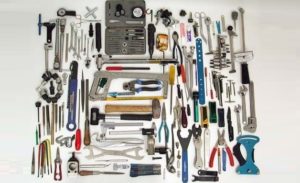
- soldering iron;
- powerful flashlight or portable lamp;
- small gas burner;
- a long rod with a mirror at the end (allows you to examine the inaccessible areas of the machine);
- pliers for pressing contacts into connectors;
- long metal ruler;
- multimeter for measuring the resistance of the main elements of the system;
- magnet;
- screwdriver with indication;
- puller for bearings СМА;
- wooden or rubber mallet;
- screwdriver;
- drill.
Having collected the maximum set of tools, you can cope with almost any breakdown in the system. A repairman can fix some defects directly at home at the customer’s place by taking a complete “suitcase” with him. For certain types of work, transportation of equipment to the workshop is required, where the equipment can be checked with special instruments.
Repair Materials
In addition to a set of tools, when repairing a washing machine, consumables are needed, as well as spare parts for equipment. In certain cases, it will be enough to remove the defective part and put in its place a new one, but sometimes you can not do without repairing the original element. Depending on the scope of work, the following materials may be needed:
- superfix adhesive;
- waterproof silicone sealant;
- thermoactive polymer resin (compound);
- special grease for treating the packing and bearings of the SMA;
- rosin (if soldering is required);
- shrink tubes of the required size;
- clamps;
- insulating tape;
- set of contact tips;
- wires
- rubber pads of various diameters;
- fuse, etc.
It does not hurt to have WD40 aerosol grease in the arsenal, which will help remove “stuck” or partially destroyed parts of the washing machine.
A true professional will not allow himself to come to a call without proper equipment. A complete set of tools and supplies allows the master to save his time and time of the customer. For a beginner in this business, it is also recommended to start by assessing the scope of work and purchasing the necessary tools in advance, so that subsequently you are not constantly distracted by the search for repair tools.
Interesting:
 How to install a washing machine in the bathroom yourself
How to install a washing machine in the bathroom yourself How to change the bearing in the LG washing machine
How to change the bearing in the LG washing machine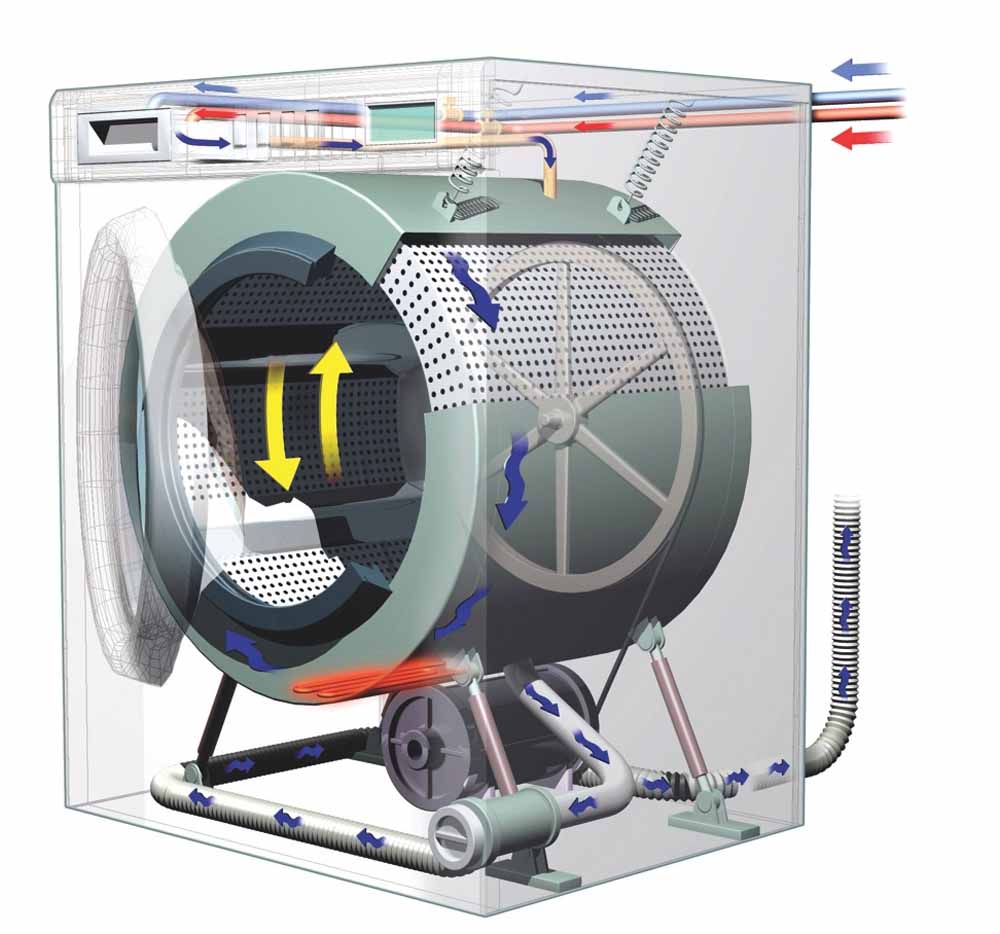 The washing machine drum hangs and staggers
The washing machine drum hangs and staggers How to change the bearing on a Samsung washing machine
How to change the bearing on a Samsung washing machine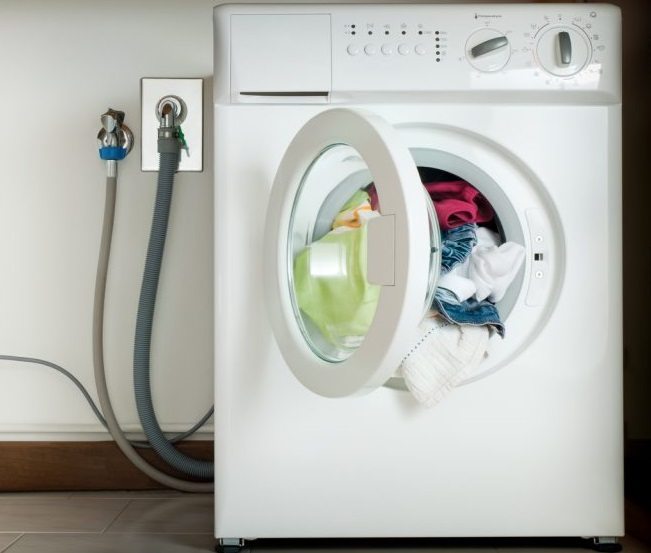 How to connect the drain hose of the washing machine to ...
How to connect the drain hose of the washing machine to ...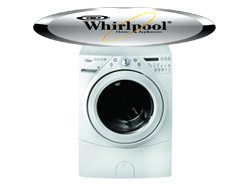 Error codes for washing machines Whirlpool
Error codes for washing machines Whirlpool
Reader Comments
- Share your opinion - leave a comment
Headings
Washing machine repair


For buyers
For users

Dishwasher












Add a comment